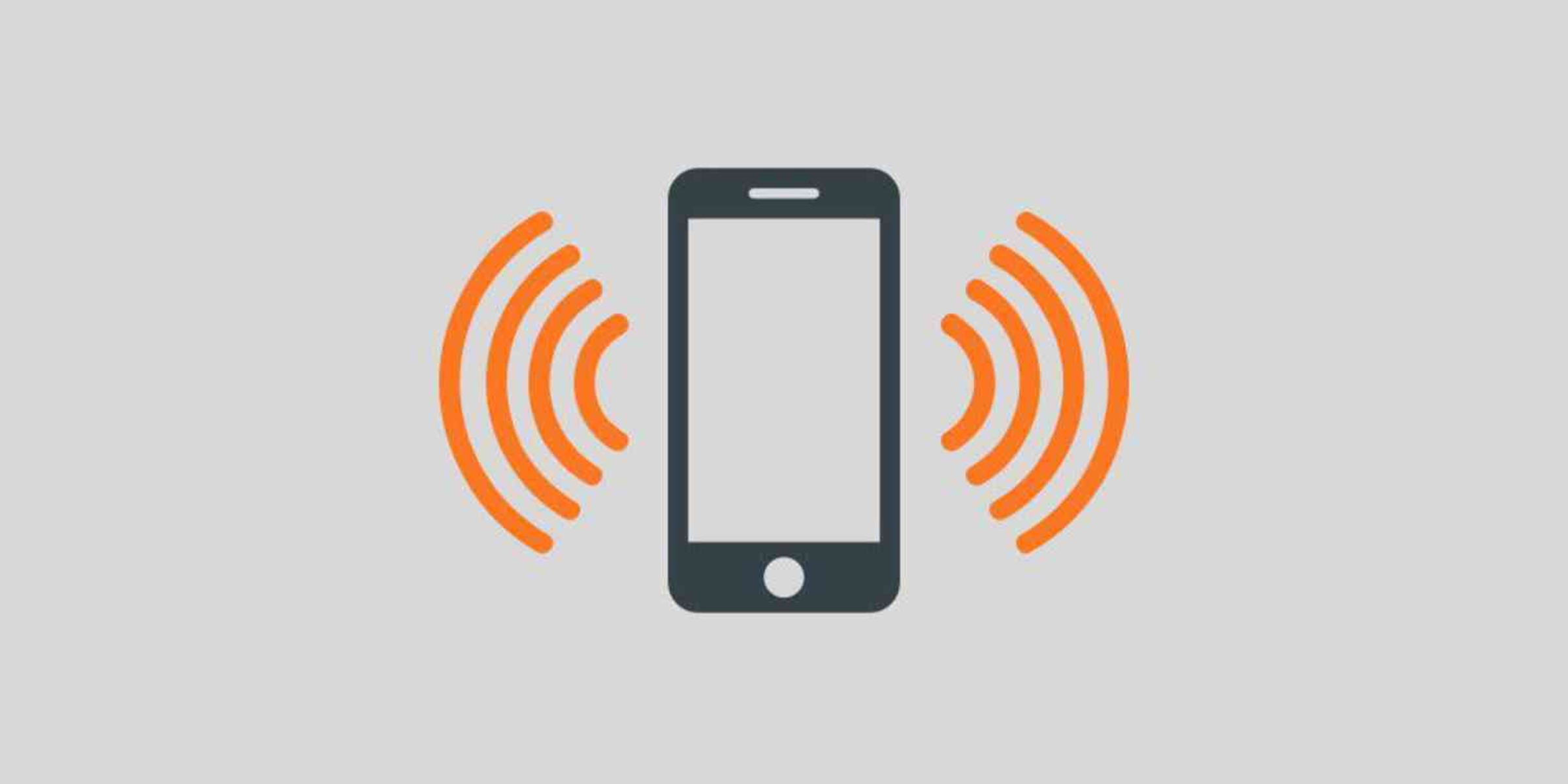Introduction
As technology continues to evolve, the internet has become an integral part of our everyday lives. We use it for work, communication, entertainment, and so much more. However, with the vast amount of information and activities available online, it’s important to monitor internet usage to ensure efficiency, productivity, and security.
Monitoring internet usage involves tracking and analyzing the online activities of users connected to a network. This process allows individuals, businesses, and organizations to gain insights into how the internet is being utilized, identify any potential issues or vulnerabilities, and make informed decisions based on the data collected.
There are several compelling reasons why monitoring internet usage is crucial. Firstly, it helps to optimize network performance and manage bandwidth allocation. By understanding how internet resources are being utilized, network administrators can identify any activities that may be impairing network speed or consuming excessive bandwidth.
Secondly, monitoring internet usage is essential for ensuring compliance with acceptable use policies and regulations. Many organizations have specific guidelines regarding internet usage, such as restricting access to certain websites or monitoring for any unauthorized activities. By monitoring internet usage, organizations can enforce these policies effectively and mitigate any potential risks.
Furthermore, internet monitoring can aid in identifying and preventing potential security threats. Cybersecurity attacks, such as phishing, malware, and unauthorized access, pose significant risks to individuals and organizations. By monitoring internet usage, suspicious activities can be detected, allowing for timely responses, mitigating the risk of data breaches, and safeguarding sensitive information.
There are various types of internet usage that can be monitored, including website visits, file downloads/uploads, online messaging and communication, social media usage, and streaming activities. Each type of internet usage can provide valuable insights into how the internet is being utilized and whether any actions need to be taken to optimize performance, enhance security, or enforce policies.
To effectively monitor internet usage, there are several tools available. Built-in network monitoring tools, such as firewalls and routers, provide basic functionality to monitor internet traffic. However, for more comprehensive monitoring, third-party internet monitoring software offers advanced features, including real-time monitoring, detailed reporting, and customizable alerts.
Why Monitor Internet Usage
Monitoring internet usage is essential for individuals and organizations alike. It provides numerous benefits that contribute to improved network performance, enhanced security, and increased productivity. Let’s explore some of the key reasons why monitoring internet usage is crucial:
- Optimize Network Performance: By monitoring internet usage, network administrators can gain insights into the utilization of bandwidth and network resources. This information allows them to identify any bottlenecks, bandwidth-intensive applications, or unnecessary network congestion. By optimizing network performance, organizations can ensure smooth operations, reduce latency, and enhance user experience.
- Manage Bandwidth Allocation: Internet monitoring enables organizations to effectively manage their bandwidth by understanding how it is being utilized. Administrators can identify bandwidth-hogging applications or excessive downloads and allocate resources according to priority or policy. This prevents bandwidth abuse and ensures fair distribution of resources among users.
- Enforce Acceptable Use Policies: Many organizations have policies in place regarding internet usage. Monitoring internet activities enables administrators to ensure compliance with these policies. They can detect and address any unauthorized usage, access to restricted websites, or violations of security guidelines. By enforcing acceptable use policies, organizations can mitigate risks and maintain a secure online environment.
- Enhance Security: Monitoring internet usage is vital for identifying and preventing security threats. Suspicious or malicious activities, such as accessing phishing websites, downloading malware, or unauthorized data transfers, can be detected in real-time. Prompt action can be taken to mitigate the risks, such as blocking access, initiating security protocols, or raising alerts for further investigation. This proactive approach strengthens the overall security posture of an organization.
- Improve Productivity: Excessive or unproductive internet usage can impact employee productivity. By monitoring internet activities, organizations can identify time-wasting websites, excessive social media usage, or non-work-related online activities. This information can be utilized to limit access to distractions during work hours or implement filtering mechanisms to block non-essential websites. Ultimately, this helps employees stay focused, improve productivity, and achieve better work-life balance.
Overall, monitoring internet usage provides valuable insights into network performance, security risks, and user behavior. It empowers organizations to make informed decisions regarding resource allocation, policy enforcement, and enhancing productivity. By effectively monitoring internet usage, individuals and organizations can optimize their internet resources, mitigate security threats, and ensure a productive and secure online environment.
Common Reasons for Monitoring Internet Usage
Monitoring internet usage serves various purposes and can be beneficial for individuals, businesses, and organizations across different industries. Let’s explore some common reasons why monitoring internet usage is important:
- Network Performance Optimization: By monitoring internet usage, organizations can identify bandwidth-intensive applications, excessive data transfers, or inefficient resource utilization. This information helps in optimizing network performance, ensuring smooth operations, reducing latency, and delivering a seamless user experience.
- Security Threat Detection: Monitoring internet usage allows organizations to detect and prevent security threats such as unauthorized access, malware downloads, or phishing attempts. Real-time monitoring and analysis of internet activities help in identifying potential risks and taking immediate action to mitigate them, minimizing the chances of data breaches and service disruptions.
- Policies and Compliance: Many organizations have acceptable use policies governing internet usage to maintain productivity, prevent data leaks, and comply with industry regulations. Monitoring internet activities helps in enforcing these policies, detecting violations, and ensuring compliance with legal and regulatory requirements.
- Bandwidth Management: Internet monitoring allows organizations to monitor bandwidth consumption and identify bandwidth-intensive applications or activities. This information helps in allocating bandwidth resources efficiently, preventing network congestion, and optimizing bandwidth usage across different departments or users.
- Productivity Enhancement: Monitoring internet usage can help organizations identify and address time-wasting activities, excessive social media usage, or non-work-related online browsing. By limiting access to non-business websites or implementing time restrictions, organizations can promote productivity, focus, and a healthier work-life balance.
- Resource Planning and Cost Savings: Monitoring internet usage provides valuable insights into data consumption patterns, enabling organizations to plan their network resources more effectively. It helps in identifying underutilized or overutilized resources, optimizing data plans, and reducing unnecessary costs.
- Service Level Agreement (SLA) Compliance: For businesses providing internet services to customers, monitoring internet usage helps in tracking and ensuring compliance with service level agreements. It enables them to measure and report on key performance indicators such as uptime, response time, and throughput to meet customer expectations.
By effectively monitoring internet usage, organizations can gain a holistic view of their network, proactively identify potential issues, improve security, optimize resource allocation, enforce policies, and enhance productivity. It is a crucial aspect of network management and plays a vital role in maintaining a secure, efficient, and compliant online environment.
Types of Internet Usage to Monitor
When monitoring internet usage, it is important to track various types of online activities to gain comprehensive insights into how the internet is being utilized. Let’s explore some common types of internet usage that are typically monitored:
- Website Visits: Monitoring website visits involves tracking the websites accessed by users. This allows organizations to identify which websites are being visited frequently, which ones may pose security risks, and which websites may be consuming excessive bandwidth.
- File Downloads/Uploads: Tracking file downloads and uploads helps in monitoring the flow of data across the network. It enables organizations to detect large file transfers, potential security breaches through unauthorized file sharing, and ensures compliance with data usage policies.
- Email and Messaging: Monitoring email and messaging activities allows organizations to track the exchange of messages, attachments, or files. This helps in detecting any unauthorized or suspicious communication, ensuring compliance with data protection regulations, and preventing the leakage of confidential information.
- Social Media Usage: Social media monitoring involves tracking the usage of popular social media platforms such as Facebook, Twitter, LinkedIn, and Instagram. It helps organizations understand how much time is being spent on social media, identify potential productivity issues, and prevent the spread of malicious content or phishing attempts.
- Streaming Activities: Monitoring streaming activities involves tracking the bandwidth utilization of platforms such as Netflix, YouTube, Spotify, or other media streaming services. This helps organizations manage bandwidth allocation, ensure fair usage among users, and prevent excessive bandwidth consumption that may impact other critical operations.
- Instant Messaging and Voice/Video Calls: Monitoring instant messaging platforms like WhatsApp or voice/video call applications like Skype or Zoom helps organizations ensure compliance with usage policies, detect any misuse of communication channels, and prevent any unauthorized transfer of sensitive information.
- Web-based Applications: Web-based applications, such as cloud services, project management tools, or CRM systems, can generate significant internet traffic. Monitoring usage of these applications helps organizations understand how their resources are being utilized, identify any potential performance issues, and optimize access and usage policies.
By monitoring these various types of internet usage, organizations can gain a comprehensive understanding of how the internet is being used within their network. This information allows for effective resource management, security monitoring, and policy enforcement, contributing to a secure and productive online environment.
Tools for Monitoring Internet Usage
To effectively monitor internet usage, there are several tools available that provide comprehensive insights into network traffic, user activities, and bandwidth utilization. These tools help organizations in optimizing performance, enhancing security, and ensuring compliance with acceptable use policies. Let’s explore some of these tools:
- Built-In Network Monitoring Tools: Many operating systems and network devices come with built-in monitoring tools. These tools provide basic functionality to monitor internet traffic, track bandwidth usage, and analyze network performance metrics. Examples include firewall logs, router traffic monitoring, and network traffic analyzers.
- NetFlow Analyzers: NetFlow analyzers collect and analyze network flow data to provide detailed insights into internet usage. They track source and destination IP addresses, ports, protocols, and data volumes. NetFlow analyzers help in identifying applications consuming bandwidth, detecting anomalies, and optimizing network performance.
- Packet Sniffers: Packet sniffers capture network traffic data at the packet level, allowing for detailed analysis of internet usage. They decode and analyze packets to monitor application-level protocols and identify the source, destination, and content of network communications. Packet sniffers are useful for diagnosing network issues, analyzing protocol behavior, and detecting unauthorized activities.
- Web Proxies: Web proxies act as an intermediary between users and the internet. They intercept and log web requests, allowing organizations to monitor and control internet access. Web proxy tools provide insights into website visits, URLs accessed, and usage patterns, helping in enforcing acceptable use policies and preventing access to malicious or non-compliant websites.
- URL Filtering Software: URL filtering software helps organizations control internet access by categorizing and filtering websites based on their content or security risk. These tools allow administrators to define and enforce website access policies, block specific categories of websites, and generate detailed reports on web browsing activities.
- DNS Monitoring Tools: DNS (Domain Name System) monitoring tools track domain name resolution requests made by users. They provide insights into which websites are being accessed and can be used to identify potentially malicious domains, track internet usage, and enforce policy-based access controls.
- Third-Party Internet Monitoring Software: There are several third-party software solutions available that offer comprehensive internet monitoring capabilities. These tools provide real-time monitoring, granular reporting, customizable alerts, and advanced analytics to track internet usage across various parameters. Examples include PRTG Network Monitor, SolarWinds Network Performance Monitor, and Nagios.
Each tool mentioned above offers different features and capabilities, and organizations should choose the ones that best align with their specific monitoring requirements, network infrastructure, and budget. Implementing these tools enables organizations to obtain deep insights into internet usage, optimize network performance, ensure security, and enforce acceptable use policies effectively.
Built-In Network Monitoring Tools
Operating systems and network devices often come equipped with built-in monitoring tools that provide basic functionality to track and analyze internet usage. While these tools may not offer the advanced features of third-party software solutions, they can still be valuable for monitoring network traffic and performance. Here are some commonly used built-in network monitoring tools:
- Firewall Logs: Firewalls are a crucial component of network security, and they often generate logs that capture information about incoming and outgoing network traffic. Analyzing firewall logs can provide insights into the types of connections being made, source/destination IP addresses, protocols used, and data transfer volumes. These logs help in detecting any unauthorized access attempts, identifying potentially malicious traffic, and ensuring compliance with security policies.
- Router Traffic Monitoring: Routers are responsible for directing network traffic, and they typically offer basic traffic monitoring functionality. Router interfaces provide statistics on bandwidth utilization, packet loss, and latency. By monitoring router traffic, network administrators can gain visibility into overall network performance, identify potential bottlenecks, and optimize network resource allocation.
- Network Traffic Analyzers: Some operating systems and network devices have built-in network traffic analyzers that capture and analyze packet-level data. These tools allow administrators to monitor and analyze network protocols, traffic patterns, and bandwidth usage. Although these built-in analyzers may not provide the same level of detail and functionality as dedicated packet sniffers, they can still be useful for basic network troubleshooting and identifying potential issues.
- Performance Monitoring Tools: Operating systems often include performance monitoring tools that track system metrics, including network performance. These tools can provide insights into CPU usage, memory utilization, disk I/O, and network throughput. By monitoring performance metrics, administrators can identify any performance bottlenecks or resource-intensive applications that may be impacting network performance.
- NetFlow: NetFlow is a technology used by some routers and switches to collect and export network traffic data. NetFlow records provide information such as source/destination IP addresses, ports, protocols, and data volumes. While not all devices support NetFlow, those that do can enable administrators to gain more visibility into network traffic, analyze usage patterns, and optimize performance.
While built-in network monitoring tools offer limited functionality compared to third-party solutions, they can still provide valuable insights into network performance, security risks, and bandwidth utilization. It is important to leverage these tools in conjunction with other monitoring techniques to create a comprehensive view of internet usage within the network. For organizations with budgetary constraints or simpler monitoring requirements, these built-in tools can be a practical and cost-effective solution.
Third-Party Internet Monitoring Software
While built-in network monitoring tools provide basic functionality, organizations seeking more advanced features and comprehensive monitoring capabilities often turn to third-party internet monitoring software. These software solutions offer a range of features to monitor and analyze internet usage, providing detailed insights into network performance, security threats, and user activities. Let’s explore some benefits and features of third-party internet monitoring software:
- Real-Time Monitoring: Third-party software solutions offer real-time monitoring of internet traffic, allowing administrators to view network activities as they happen. This real-time visibility enables prompt detection and response to any performance issues, security threats, or policy violations.
- Detailed Reporting: Internet monitoring software generates detailed reports on various aspects of internet usage, such as websites visited, applications used, bandwidth consumption, and user activities. These reports provide valuable insights for network optimization, security audits, and policy enforcement.
- Customizable Alerts: These software solutions offer customizable alerts based on specific criteria or thresholds. Administrators can set up alerts to be notified when certain events occur, such as high bandwidth usage, access to blocked websites, or any suspicious network behavior. Customizable alerts help in proactive monitoring and prompt response to any issues or security incidents.
- Advanced Analytics: Third-party software often includes advanced analytics features that can analyze internet usage data and provide deep insights. These analytics capabilities help in identifying trends, detecting anomalies, and making data-driven decisions regarding resource allocation, capacity planning, and network optimization.
- Policy Enforcement: Internet monitoring software allows organizations to enforce acceptable use policies effectively. Through features like URL filtering, application control, and bandwidth allocation policies, administrators can ensure compliance, prevent access to restricted websites, block or limit certain applications, and promote productivity.
- Security Threat Detection: Third-party software solutions offer advanced security monitoring features. They can detect and alert administrators about potential security threats, including malware downloads, phishing attempts, and suspicious network behavior. These security features help in mitigating risks, preventing data breaches, and safeguarding sensitive information.
- Scalability: Third-party software is designed to handle large-scale networks and can scale up to meet growing monitoring needs. They can monitor internet usage across multiple locations, devices, and users, providing a comprehensive view of network activities in complex environments.
Popular third-party internet monitoring software includes solutions like PRTG Network Monitor, SolarWinds Network Performance Monitor, Nagios, and ManageEngine OpManager. These software solutions offer a wide range of features and can be tailored to suit specific monitoring requirements.
By utilizing third-party internet monitoring software, organizations can gain comprehensive insights into network performance, optimize resource allocation, enforce policies, and enhance security. These software solutions provide advanced functionality and greater flexibility, empowering administrators to effectively manage and monitor internet usage within their networks.
How to Monitor Internet Usage on Windows
Monitoring internet usage on a Windows system can be done using various built-in tools and third-party software. Let’s explore some methods to monitor internet usage on Windows:
- Task Manager: The Task Manager in Windows provides basic information about the processes and applications running on your system. To monitor internet usage, open the Task Manager by pressing Ctrl+Shift+Esc, go to the “Network” tab, and check the “Network Utilization” section. This will show you real-time information about the network usage of each running process.
- Resource Monitor: Resource Monitor is another built-in tool that provides detailed statistics about the network activity on your Windows system. To open Resource Monitor, press the Windows key, type “Resource Monitor,” and select the application. In the “Network” tab, you can find information about each process’s network usage, including the total number of bytes sent and received.
- Windows Performance Monitor: Windows Performance Monitor allows you to monitor various aspects of your system, including network performance. To open Windows Performance Monitor, press the Windows key, type “Performance Monitor,” and select the application. From there, you can add counters related to network activity, such as Bytes Sent/sec and Bytes Received/sec, to track internet usage over time.
- Network Usage in Settings: Windows 10 has a built-in feature that allows you to monitor your network usage. To access this, go to “Settings,” then “Network & Internet,” and select “Data Usage.” Here, you can view data usage statistics for both Wi-Fi and Ethernet connections, as well as set limits and monitor usage on a per-app basis.
- Third-Party Monitoring Software: There are also third-party software options available that offer more advanced features for monitoring internet usage on Windows. These software solutions provide real-time monitoring, detailed reporting, customizable alerts, and advanced analytics. Some popular options include PRTG Network Monitor, SolarWinds Network Performance Monitor, and NetWorx.
When monitoring internet usage on Windows, it’s important to consider your specific requirements and the level of detail you need. Built-in tools like Task Manager and Resource Monitor can provide basic information, while third-party software offers more advanced functionality for in-depth monitoring and analysis.
Ultimately, the choice of monitoring method will depend on your network environment, the level of monitoring required, and your budget. By effectively monitoring internet usage on Windows, you can optimize network performance, ensure security, and enforce acceptable use policies to create a more efficient and secure network environment.
How to Monitor Internet Usage on Mac
Monitoring internet usage on a Mac system can be done using various built-in tools and third-party software. Let’s explore some methods to monitor internet usage on a Mac:
- Activity Monitor: The Activity Monitor on Mac provides basic information about the processes and applications running on your system. To access it, go to “Applications,” then “Utilities,” and open “Activity Monitor.” In the “Network” tab, you can see real-time information about the network usage of each running process, including the amount of data sent and received.
- Network Utility: Network Utility is a built-in tool on Mac that offers various network-related utilities. To access it, go to “Applications,” then “Utilities,” and open “Network Utility.” In the “Info” tab, you can find network statistics like total data in/out, data per second, and connection activity. You can also use the “Netstat” tab to view active network connections.
- Command Line Tools: Mac OS provides command line tools that can be used to monitor network activity. Tools like “nettop” and “iftop” can show real-time network traffic, processes using network resources, and bandwidth usage. Open the “Terminal” application to use these command line tools.
- iStat Menus: iStat Menus is a popular third-party software for monitoring system performance, including network activity, on Mac. It provides real-time monitoring of network usage, bandwidth usage, and detailed statistics. iStat Menus can be customized and displayed in the Mac menu bar for easy access to network monitoring information.
- Little Snitch: Little Snitch is a third-party software that offers advanced network monitoring and security features. It allows you to monitor outgoing network connections, detect and block unauthorized connections, and track network activity based on applications. Little Snitch provides detailed information about network usage and gives you control over which processes can connect to the internet.
When monitoring internet usage on a Mac, consider your specific requirements and the level of detail you need. Built-in tools like Activity Monitor and Network Utility can provide basic information, while third-party software options offer more advanced functionality for in-depth monitoring and analysis.
Choosing the right method for monitoring internet usage on a Mac depends on your network environment, the level of monitoring required, and your budget. By effectively monitoring internet usage on your Mac, you can optimize network performance, ensure security, and enforce acceptable use policies to create a more efficient and secure network environment.
How to Monitor Internet Usage on Mobile Devices
Monitoring internet usage on mobile devices is crucial for individuals and organizations to ensure efficient data usage, manage costs, and maintain a secure online environment. Here are some methods to monitor internet usage on mobile devices:
- Built-in Usage Tracking: Most mobile operating systems, such as iOS and Android, have built-in features to monitor data usage. These features can be found in the settings of the device. In iOS, go to “Settings,” then “Cellular” to view data usage. In Android, go to “Settings,” then “Network & internet,” followed by “Mobile network” or a similar option, to find data usage statistics. These built-in tools provide an overview of data usage on a per-app basis.
- Carrier Tools: Mobile carriers often provide tools or apps to monitor data usage. Check with your mobile carrier to see if they offer any dedicated apps or online portals where you can track data usage. These tools may offer more detailed information, including usage history, specific app data usage, and the ability to set data limits or receive usage alerts.
- Third-Party Usage Monitoring Apps: There are several third-party apps available for both iOS and Android that provide more advanced internet usage monitoring features. These apps offer detailed data usage analytics, real-time monitoring, and the ability to set usage limits or receive notifications when certain thresholds are reached. Some popular options include My Data Manager, Data Usage Monitor, and Onavo.
- Parental Control Apps: Parental control apps not only allow parents to monitor and control their child’s internet usage but can also be used by individuals or organizations to monitor and manage data usage. These apps enable the monitoring of app usage, restrict access to certain websites or apps, track browsing history, and enforce data limits. Examples include Norton Family Premier, Qustodio, and FamilyTime.
When monitoring internet usage on mobile devices, it’s important to consider the specific features and limitations of each method. Built-in tools provide basic data usage information, while carrier tools and third-party apps offer more detailed insights and additional functionalities. Based on your requirements, you can choose the method that best suits your needs.
By effectively monitoring internet usage on mobile devices, individuals and organizations can optimize data usage, manage costs, enforce usage policies, and ensure a secure online experience. Whether utilizing built-in tools, carrier resources, or third-party apps, staying aware of internet usage on mobile devices is essential in today’s connected world.
Best Practices for Monitoring Internet Usage
Monitoring internet usage is essential for optimizing network performance, ensuring security, and enforcing acceptable use policies. To make the most out of your monitoring efforts, it is important to follow best practices that help maximize the effectiveness of your monitoring strategy. Here are some key best practices for monitoring internet usage:
- Define Clear Usage Policies: Establishing clear and comprehensive acceptable use policies is crucial. Clearly define what constitutes acceptable internet usage, specify any restricted websites or activities, and communicate these policies to all users. A well-defined policy sets clear expectations and provides a basis for monitoring and enforcement.
- Regularly Monitor and Review Usage Data: Consistently monitor and review the data collected from internet usage monitoring tools. Regularly analyze reports and metrics to identify trends, anomalies, and any potential areas for improvement. This ensures that you have up-to-date insights into the network’s performance and helps in making informed decisions.
- Set Realistic Usage Limits: Determine and set realistic usage limits based on business requirements and available resources. This helps in managing bandwidth allocation, controlling costs, and ensuring fair usage across the network. Establishing limits also enables proactive monitoring to detect and address any excessive or unauthorized usage.
- Implement Alerts and Notifications: Configure alerts and notifications within your monitoring tools to receive real-time notifications about any unusual or suspicious internet usage patterns. This allows you to quickly respond to potential security threats, high bandwidth consumption, or violation of acceptable use policies.
- Educate Users and Provide Training: Properly educate users about acceptable internet usage practices and the reasons for monitoring. Provide training on how to use internet resources responsibly, how to identify potential security risks, and how to report any concerning activities. This promotes a culture of responsible internet usage and empowers users to protect themselves and the organization.
- Regularly Update and Patch Monitoring Tools: Keep your monitoring tools up to date with the latest patches and updates. This ensures that the tools are effective in detecting new threats and vulnerabilities. Regular updates help in maintaining the accuracy and reliability of the monitoring data.
- Secure Monitoring Data: Ensure that the data collected from internet usage monitoring is securely stored and accessible only to authorized personnel. Implement appropriate security measures to protect this data from unauthorized access or breaches. Encrypting the data and limiting access rights are some methods to safeguard the monitoring data.
- Review and Enhance Monitoring Strategy: Continuously evaluate and enhance your internet usage monitoring strategy and tools. As technology evolves, new threats emerge, and network requirements change, it is crucial to adapt your monitoring practices. Stay up to date with the latest industry trends, explore new tools, and make improvements to your monitoring strategy as needed.
By following these best practices, organizations can effectively monitor internet usage, optimize network performance, strengthen cybersecurity, enforce policy compliance, and create a secure and productive online environment.
Conclusion
Monitoring internet usage is a fundamental practice for individuals and organizations to optimize network performance, enhance security, and ensure compliance with acceptable use policies. By tracking and analyzing internet activities, valuable insights can be gained regarding bandwidth utilization, security threats, and user behavior.
Common reasons for monitoring internet usage include optimizing network performance, managing bandwidth allocation, enforcing acceptable use policies, enhancing security, improving productivity, and reducing costs. Various types of internet usage can be monitored, such as website visits, file downloads/uploads, email and messaging, social media usage, streaming activities, and more.
When it comes to monitoring internet usage, there are different tools and methods available. Built-in network monitoring tools on operating systems and network devices provide basic functionality to monitor internet traffic and network performance. Third-party internet monitoring software offers more advanced features, including real-time monitoring, detailed reporting, customizable alerts, and advanced analytics.
On Windows, monitoring internet usage can be done using built-in tools like Task Manager, Resource Monitor, and Windows Performance Monitor. On a Mac, Activity Monitor, Network Utility, command line tools, and third-party apps like iStat Menus and Little Snitch can be utilized. For mobile devices, built-in usage tracking, carrier tools, and third-party apps like My Data Manager and Data Usage Monitor can help monitor internet usage.
To maximize the effectiveness of monitoring internet usage, it is important to follow best practices. These practices include defining clear usage policies, regularly monitoring and reviewing usage data, setting realistic usage limits, implementing alerts and notifications, educating users, updating and patching monitoring tools, securing monitoring data, and continuously reviewing and enhancing the monitoring strategy.
By implementing effective internet usage monitoring practices, individuals and organizations can optimize network performance, ensure security, enforce policies, and create a productive and secure online environment. Monitoring internet usage is a proactive approach that enables better resource management, risk mitigation, and informed decision-making.

























